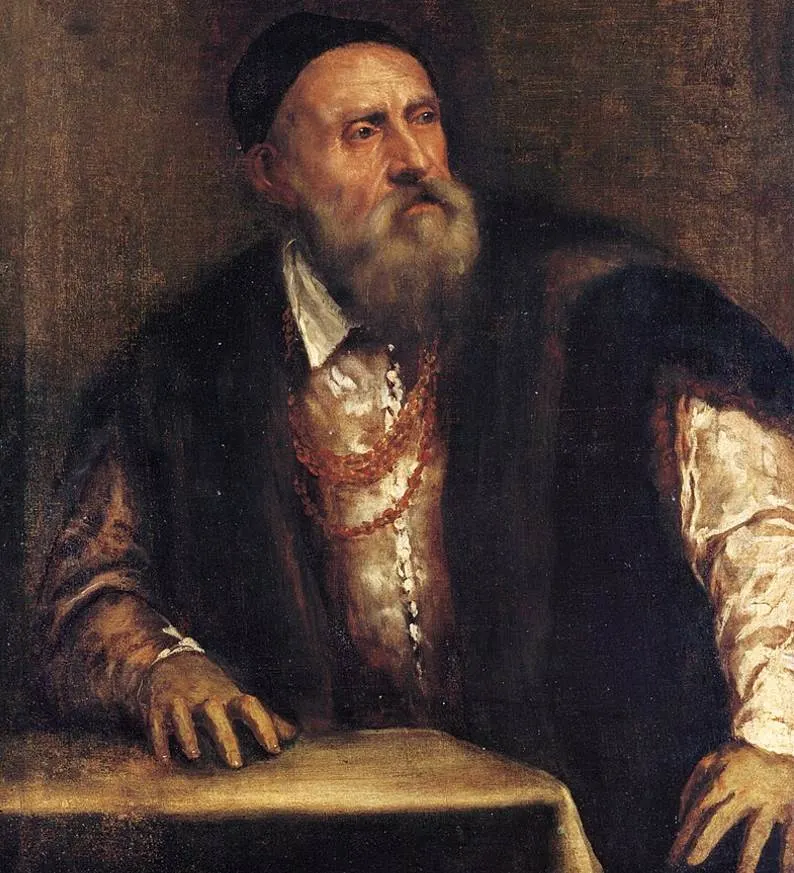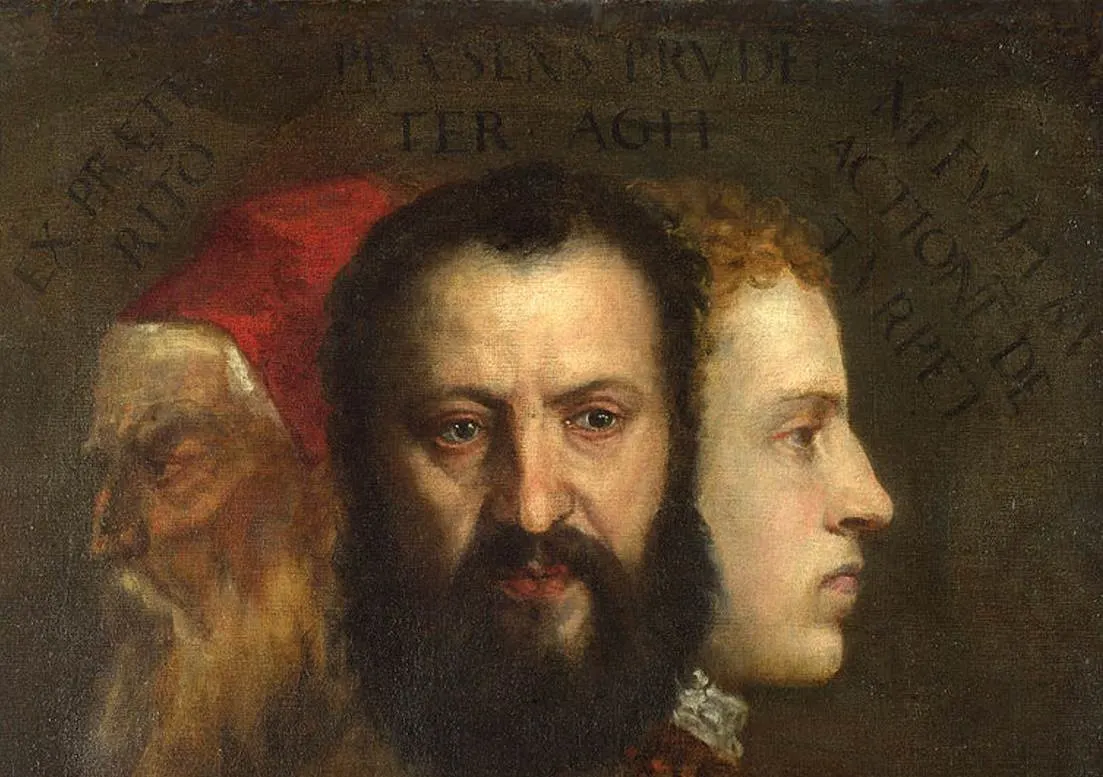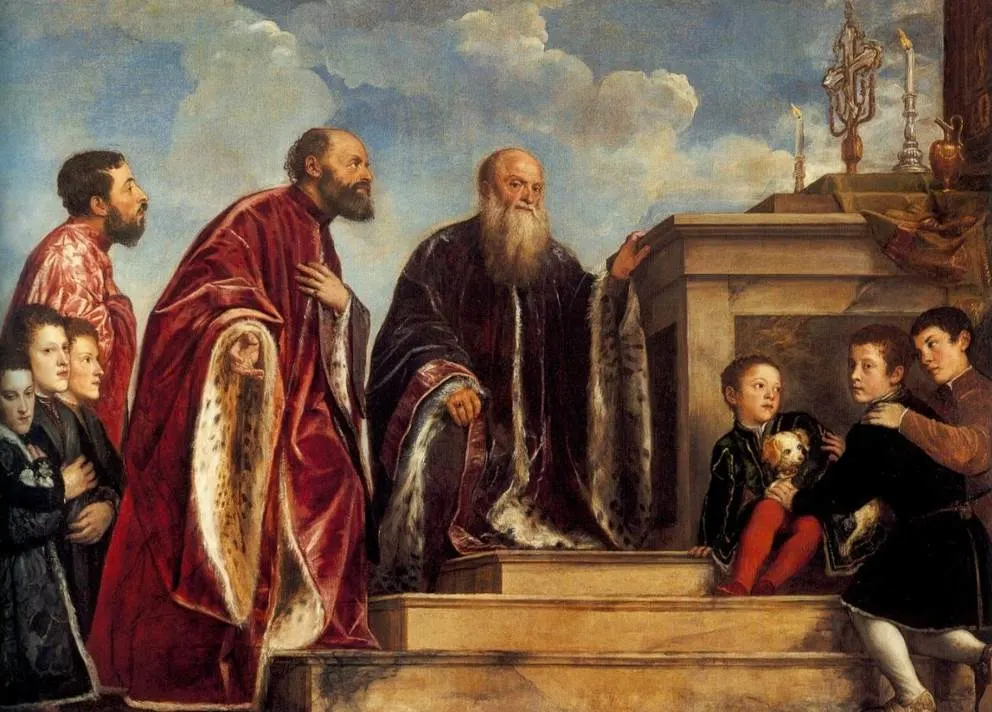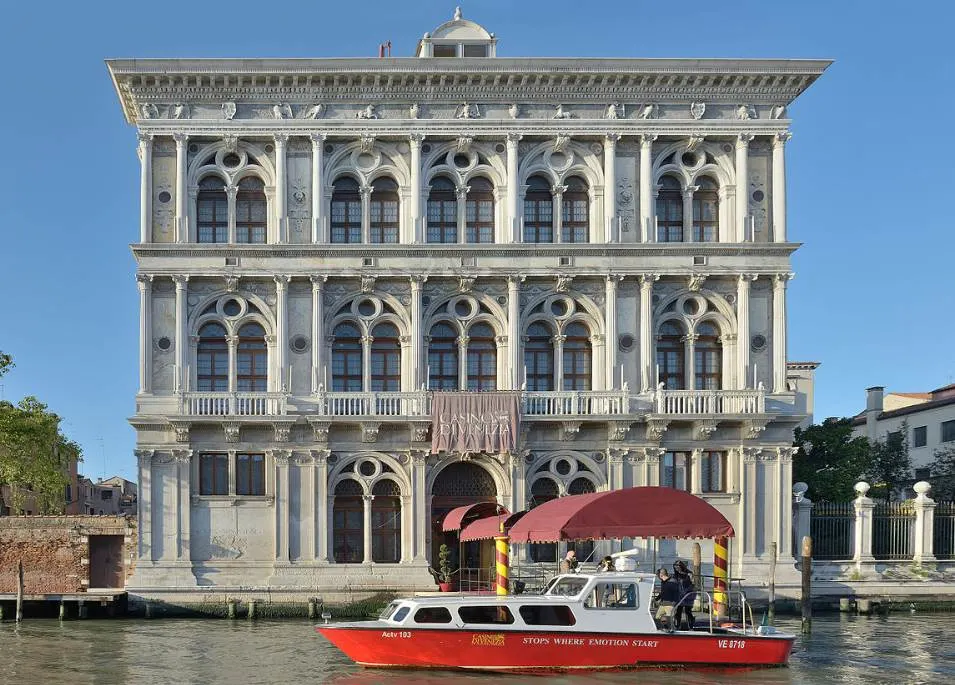Because the career of one of the greatest Renaissance painters of the 16th century was so long, it allowed him to reflect on his life.
Tiziano Vecelli (1488-1576), better known by his nickname “Titian,” probably lived until his late 80s or early 90s (his exact date of birth is unknown) and he produced numerous monumental works of art.
One of the most remarkable paintings in his oeuvre depicts three human heads on top of three animal heads and has been debated by art historians for centuries.
In this article, you’ll discover some of the most interesting facts about The Allegory of Prudence by Titian, one of the most mysterious Renaissance paintings ever produced.
1. It was completed over several years in the final decades of Titian’s life
Titian was born in the town of Pieve di Cadore in the Province of Belluno about 110 kilometers ( 68 miles) north of Venice.
He is considered to be one of the three leading Venetian painters of the 16th century together with Tintoretto and Paolo Veronese.
The Italian artist was one of the most versatile painters in history. He was able to produce large mythological and historical paintings, altarpieces, portraits, and everything else as well basically.
The final decades of his life were defined by both his portraiture and the paintings he completed for King Philip II of Spain. The so-called “Poesie series” was one of the greatest achievements in art history.
Nothing is known about the details of this painting but it’s assumed that The Allegory of Prudence by Titian was completed somewhen between 1550 and 1565.

2. It depicts 3 human and 3 animal heads which reflect the passage of time

The Venetian master already treated the subject of the passing of time in his monumental work “The Three Ages of Man” about 5 decades earlier between 1512 and 1514.
This work allowed the artist to reflect on his long life as his final years were approaching. The painting depicts a young man, an adult man, and an old man, above 3 animal heads.
The wolf, lion, and dog are believed to be allegories of the past, present, and future.
It’s uncertain where Titian got his inspiration for this but a book was published in Venice in 1556 titled “Hieroglyphica” by Pierio Valeriano. The emblem of this book was a serpent with 3 heads of these animals which represented prudence.

3. The painting got its name from an inscription just above the heads
Linking a published novel to the painting’s title is one way to figure out what it’s about. The other is to simply read the inscription above the heads which states:
EX PRÆTE/RITO // PRÆSENS PRVDEN/TER AGIT // NI FVTVRA / ACTIONĒ DE/TVRPET
This translates to “From the experience of the past, the present acts prudently, lest it spoils future actions.”
Did Titian reflect on his life as an old man and come to the conclusion that his mistakes from the past resulted in a gloomy life in old age? It’s one possible explanation for this mysterious work of art.

4. It’s possible that the 3 heads depict Titian, his son, and his nephew
There is no reference to identify the three people whose heads appear to merge in this painting. The old man somehow resembles the self-portraits that Titian made when he was old.
Some art historians have suggested that the old man on the left is another self-portrait by Titian, while the man in the middle depicts his son Orazio Vecelli, the artist’s son.
The young man on the left could be Marco Vecelli, the artist’s nephew. Both Orazio and Marco were painters who worked in Titian’s workshop.
Unfortunately, no portraits of both men exist so it’s impossible to confirm this theory.
5. Another suggestion is that it depicts members of a powerful Venetian family
Some art historians are more careful in their view of this painting and believe it’s not a personal work of art at all but a commissioned painting.
Sir Nicholas Penny believes that the painting was commissioned because the young man looks strikingly similar to those in another Titian painting called “Members of the Vendramin Family Venerating a Relic of the True Cross.”

This was a rich and powerful merchant family in Venice who commissioned several works of art from the Venetian painter, including this one in the mid-1540s.
If this is true, it’s possible that The Allegory of Prudence was intended to decorate the interior of the Palazzo Vendramin in Venice.

6. The fact that many changes were made makes this work even more mysterious
Because the painting is so mysterious, it has been examined with X-ray images and infrared reflectography in an attempt to figure out more.
The remarkable discovery was that the current composition was painted over an existing figure who was wearing a wide collar. This figure was looking to the left and seen from the back.
The heads in the painting feature different levels of quality and the animals aren’t the best as well. This makes it likely that one of Titian’s assistants added these later on.
Why did Titian need help to complete this painting? It remains an open question today.
7. How big is The Allegory of Prudence by Titian?
The Italian master procured dozens of immense works of art that cover entire museum walls today. This painting surely isn’t one of these.
The Allegory of Prudence by Titian is a relatively small oil on canvas painting that has dimensions of 76.2 × 68.6 centimeters (30 × 27 inches).

8. Where is the painting located today?
The painting was owned by George Hamilton-Gordon, 4th Earl of Aberdeen (1784-1860), and Alfred de Rothschild (1842-1918) in the 19th and early 20th centuries.
It was presented to one of the most popular museums in London in the year 1966 from the collection of Betty and David Koetser.
Today, Titian’s masterpiece remains one of the most intriguing attractions at the National Gallery in London.

